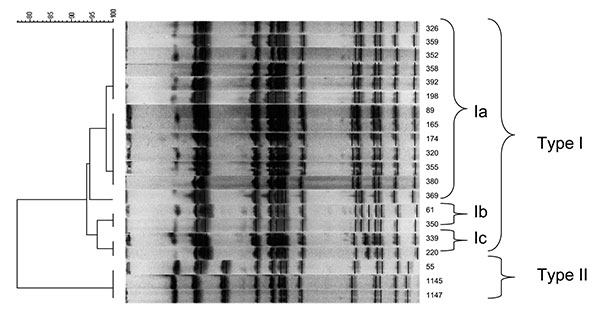Volume 10, Number 12—December 2004
Research
Cats as a Risk for Transmission of Antimicrobial drug−resistant Salmonella
Figure 1

Figure 1. Dendrogram obtained by unweighted pair group method using arithmetic averages clustering of the pulsed-field gel electrophoresis–XbaI patterns of serovar Typhimurium strains isolated from cats on the basis of the Dice coefficient.
Page created: April 14, 2011
Page updated: April 14, 2011
Page reviewed: April 14, 2011
The conclusions, findings, and opinions expressed by authors contributing to this journal do not necessarily reflect the official position of the U.S. Department of Health and Human Services, the Public Health Service, the Centers for Disease Control and Prevention, or the authors' affiliated institutions. Use of trade names is for identification only and does not imply endorsement by any of the groups named above.